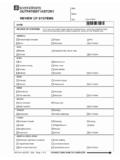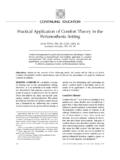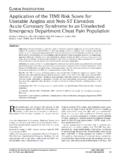Transcription of DIABETIC KETOACIDOSIS MANAGEMENT PROTOCOL
1 1 DIABETIC KETOACIDOSIS MANAGEMENT PROTOCOLT able of .. Evaluation .. 4 Physical signs/Coma scale ..4 Assessment of dehydration ..6 Assessment of acidosis ..7 Initial laboratory studies ..8 Serial laboratory monitoring ..10 Fluid therapy ..10 Glucose ..12 Bicarbonate ..13 Sodium ..15 Potassium ..15 Phosphorous ..17 Calcium ..18 Magnesium ..18 Insulin ..19 Continuous low dose insulin infusion ..19 Intermittent subcutaneous insulin ..22 Intramuscular insulin .. of DKA therapy ..27 Cerebral edema ..27 Other .. and Bolts ..342 DIABETIC KETOACIDOSIS MANAGEMENT PROTOCOL The key to successful MANAGEMENT of DKA ATTENTION TO DETAIL! :Diabetes KETOACIDOSIS is one of two serious, acute life-threatening complications of Type I,insulin deficient diabetes mellitus (IDDM), or Type II, insulin insufficient diabetes mellitus,the other being severe hypoglycemia.
2 DIABETIC KETOACIDOSIS (DKA) may initiate the clinicalonset of Type I diabetes or mayoccur at any time during its subsequent course. About one-quarter of persons with new onset IDDM will present in DKA. Rarely will patients withType II diabetes mellitus develop KETOACIDOSIS is always caused by a relative or absolute insulin , it is characterized by hyperglycemia of varying degreeand:Blood pH< Glucose> 250 mg/dlHCO3< 15 mEq/LKetonemia> 1:2 dilutionDiabetic KETOACIDOSIS in persons with established IDDM may occur as a consequence of theperson s failure to administer the prescribed insulin or from environmental factors thatinterfere with the action of insulin. Factors such as illnesses, infections and psychologicstress result in the increased production and release of stress hormones such asepinephrine, norepinephrine, cortisol, growth hormone and glucagon.
3 These hormones notonly interfere with the peripheral action of insulin but also stimulate the release of hepaticglucose (glycogenolysis) as well as the productionof new glucose from endogenousprecursors (gluconeogenesis). Free fatty acids released by the increased rate of lipolysisare metabolized in the liver into -hydroxybutyrate, acetoacetate and acetone (collectivelyknown as ketones ). The resulting ketonemia raises plasma hydrogen ion concentration( lowers pH) thus leading to the development of KETOACIDOSIS . Simply speaking, in thediabetic person already on insulin therapy, the stress-provoking environmental factorscause a significant imbalance between the insulin effect and the counter-regulatoryhormones effects and results in a state of accelerated tissue catabolism that may progress per se does not always result in metabolic acidosis.
4 It does, however, indicatethat insufficient insulin is present and that the other metabolic changes associated with suchinsufficiency ( hyperglycemia) will result in increased fluid losses due to osmoticdiuresis. Under conditions of normal thirst sensation, the person will be able to keep upwith the increased fluid losses by drinking. When this compensatory response is interruptedby nausea and vomiting, there can be a rapid progression to dehydration and metabolicketoacidosis. Correction of this metabolic decompensation state requires re-establishinginsulin balance and the proper replacement of fluid and electrolyte , for any given episode of KETOACIDOSIS the precipitating event remains a careful screen for infection is appropriate, one should be aware thatleukocytosis, with counts as high as 30,000/mm , is common with DKA as a result of theassociated leukemoid response to stress.
5 The clinical picture can also, on occasion,resemble appendicitis or an acute abdomen. However, abdominal pain, nausea andvomiting are often the consequence of an acidosis-related increased prostaglandin (PGI2and PGI3) production from adipose tissue. Failure to self-administer insulin is much morecommon than generally appreciated and may be a manipulative event by the young patientwith diabetes, especially in the adolescent. It is worth noting that there is no evidence thatDKA will result SOLELY from dietary indiscretion. The amount of insulin required tosuppress lipolysis is approximately one order of magnitude (10 fold) less than the amountrequired to adequately control plasma glucose KETOACIDOSIS is a serious complication and the mortality rate in pediatric hospitalsis STILL between % and 2 %, mostly secondary to intra-cerebral crises.
6 Patientsadmitted with a diagnosis of DKA need to be monitored closely and aggressively untilclinically and biochemically stable and the acidosis and hyperglycemia are fully placement within the hospital of the child or adolescent withDKA is an importantmanagement consideration. Careful and timely monitoring is mandatory and should bedone only by a trained professional observer at least every thirty minutes. If suchmonitoring can be accomplished without undue burden on the staff,then admission to aregular pediatric hospital floor is acceptable. If NOT, then the child with DKA MUST beadmitted to an intensive care setting that will facilitate the needed, close observation volume electrolyte precipitating EVALUATION:*Admit patients with DIABETIC KETOACIDOSIS only to a unit in which vital signsand neurological status can be monitored frequently and glucose levels canbe measured hourly.
7 All patients with a pH < of thefollowing must be admitted ONLY to a pediatric Intensive Care or deteriorating mental glucose > 1000 < 3 instability after 1sthour of fluid therapy( required > 40 ml/kg IV bolus fluids)e. respiratory insufficiency*Maintain constant cardiac monitoring until KETOACIDOSIS resolves and patientis clinically stable.*Keep precise and timely notes about the patient and his or her clinicalprogress, including rationalization for therapeutic decisions.*Maintain a thorough flow sheet record of all laboratory and treatmentmeasures pertinent to the patient s progress and therapeutic Signs:At presentation, assess ABCS for stability of patient s status (A = airway;B = breathing; C = circulation; S = sensorium/brain function) Status.
8 If patient s airway is compromised or if there aresignsof an impending compromise ( respiratory fatigue, elevatedpCO2), use bag-valve-mask ventilationandconsider intubation andcontrol of the Status. Severe lethargy, drowsiness and somnolence arecommon accompaniments of DKA and are due to the combined effects ofdehydration and acidosis. Semi-coma and coma may also occur and mayeither be present at onset or develop during the course of treatment. Athorough neurological evaluation must be performed on admission and atregular intervals during treatment for DKA. Throughout the first 48 hoursthe patient should be closely monitored for neurologic deterioration due tocerebral assess the level of consciousness in children 3 years of age, use theChildren s Coma Scale:Eye OpeningScoreSpontaneous4 Reaction to speech3 Reaction to pain2No response1 Best Motor ResponseSpontaneous (obeys verbal commands)6 Localizes pain5 Withdraws to pain4 Abnormal flexion response to pain(decorticate posturing)3 Abnormal extension response to pain(decerebrate posturing)2No response to pain1 Best Verbal ResponseSmiles; oriented to sound; follows objectsand interacts appropriately5 CryingInteractsconsolableinappropriate4i nconsistently consolablemoaning3inconsolableirritable.
9 Restless2no responseno children > 3 years of age:Eye OpeningScoreSpontaneous5 Reaction to speech4 Reaction to pain3No response1 Best Motor ResponseSpontaneous (obeys verbal commands)6 Localizes pain5 Withdraws to pain4 Abnormal flexion response to pain(decorticate posturing)3 Abnormal extension response to pain(decerebrate posturing)2No response16 Best Verbal ResponseOriented and converses5 Disoriented but converses4 Inappropriate words3 Incomprehensible sounds2No response1 Total Score Scale:15 Normal, awake, conversive and oriented12-13 Disoriented, localizes to pain, opens eyes to verbalcommands(<13 suggests the presence of cerebral edema)8-10opens eyes only to painful stimuli, shows flexor or extensorre sponse to pain (non-localized)(<8 is considered a medical emergency)3 Brain Volume.
10 Determine patient s clinical hydrationstatus by examining vital signs (heart rate, blood pressure, pulsepressure), the qualityof the peripheral pulse quality and capillary refilltime. Weigh patient carefully. Fluid administration may be themostimportant early treatment Check for fruity-smelling breath and increased depth as ell asrate of breathing. Classic Kussmaul respirations occur when the pH is Shallow breathing may indicate a more severe degree of Screen for a source of infection. Severe leukocytosis mayoccur with DKA and NOT be indicative of an Monitor vital signs, including assessment of mental statusand overall state of hydration, at least hourly via a competent, professionalobserver. Record intake and output accurately. Weigh patient every24 of Dehydration:% DehydrationSevere10-15%Moderate5-10%Mild < 5%The degree of dehydration observed in DKA is variable and, on occasion,may be profound.











